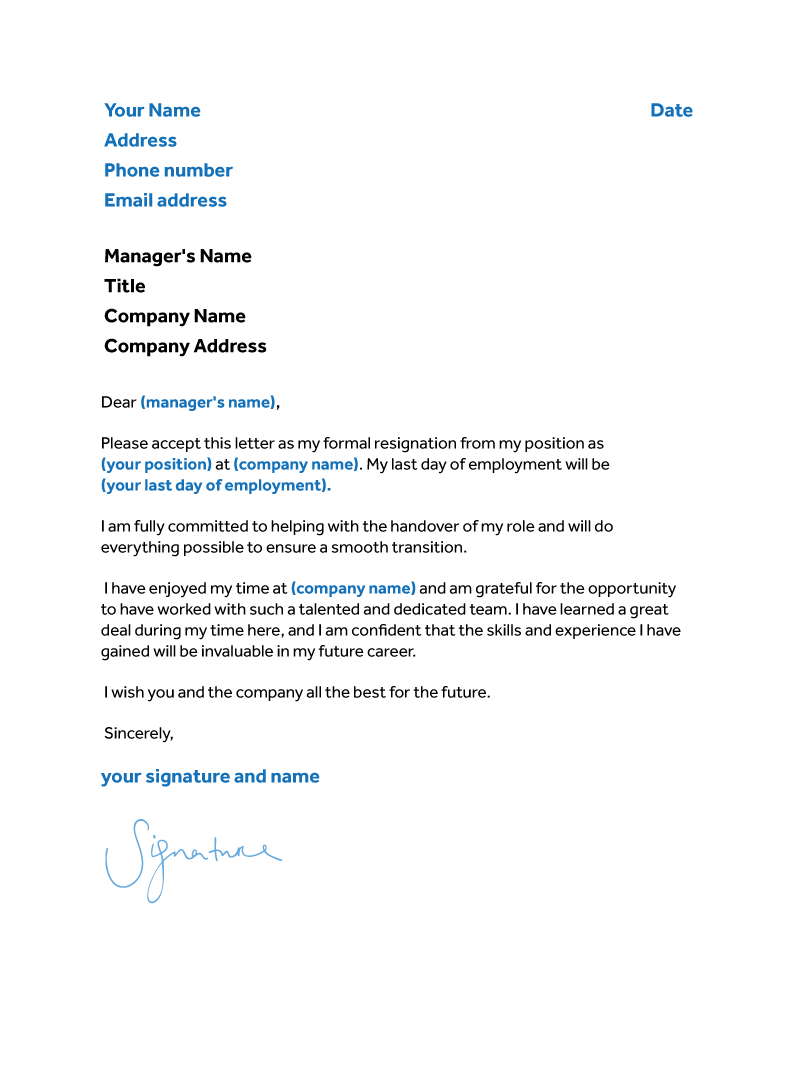
What is a resignation letter?
A letter of resignation is a formal document that you submit to your employer to inform them of your intention to leave your job. It should be brief and to the point, but also polite and professional, covering all the essential information.
When should you write a letter of resignation?
You should write a resignation letter once you have accepted a new job offer or decided to leave your job for another reason. Your resignation letter can be submitted either by email or printed letter. It’s normally better to submit your letter printed and in person, since this demonstrates a higher level of professionalism and respect.
If your employment contract doesn’t specify a set notice period, then fair and reasonable notice must be given. This should take into account your length of service, your role, and how long it might take to find a suitable replacement. Depending on the circumstances, 2-4 weeks of notice is often seen as fair.
What should you include in your resignation letter?
As well as officially announcing your departure, your resignation letter also conveys housekeeping information, such as your last working day and handover plans. By being transparent about these details with your current employer, you can ensure a smooth transition into the next chapter of your career.
With this in mind, your resignation letter should include the following information:
Your full name
Your position in the company
Your last day of employment
A brief statement expressing your gratitude for the opportunity to work for the company and your wishes for their future success
Your commitment to ensuring a smooth handover process
You may also want to include the reason for your resignation, but this is not required. If you do decide to include the reason for your resignation, be sure to do so in a professional and respectful manner. You might even include a separate document outlining your outstanding projects and tasks, so your successor has an easier time picking up where you left off.
Whatever you choose to include in your resignation letter, make sure you are direct and only focus on important details.
Finally, proofread your letter carefully before submitting it to your manager or supervisor.
What should you not include in your resignation letter?
Don’t use your letter of resignation as an opportunity to air your grievances. It isn’t appropriate to share any negative opinions you may have about your workplace.
Most employers will have a formal process that allows departing employees to discuss their reasons for leaving. It’s always best to save any complaints you have about the company and its staff for your exit interview. Even then, try to keep your feedback polite and constructive.
Ultimately, the aim is not to burn any bridges during your resignation. You never know when you might cross paths with a former employer further down the track.
Resignation letter template
To ensure your letter ticks all the boxes, here is a simple letter of resignation template that you can use.

Remember – a resignation letter is an important document, so you should take the time to write it well. By following the tips in this guide, you can write a resignation letter that is professional and gracious, covering all the key information and helping to ensure you leave the company on a positive note.
If you’re an Australian business owner struggling to navigate your obligations as an employer, we’re here to help. Over 31,000 businesses like yours trust Employsure for support with employment relations and health & safety. Call our FREE Advice Line today on 1300 651 415 to get all your difficult questions answered.


